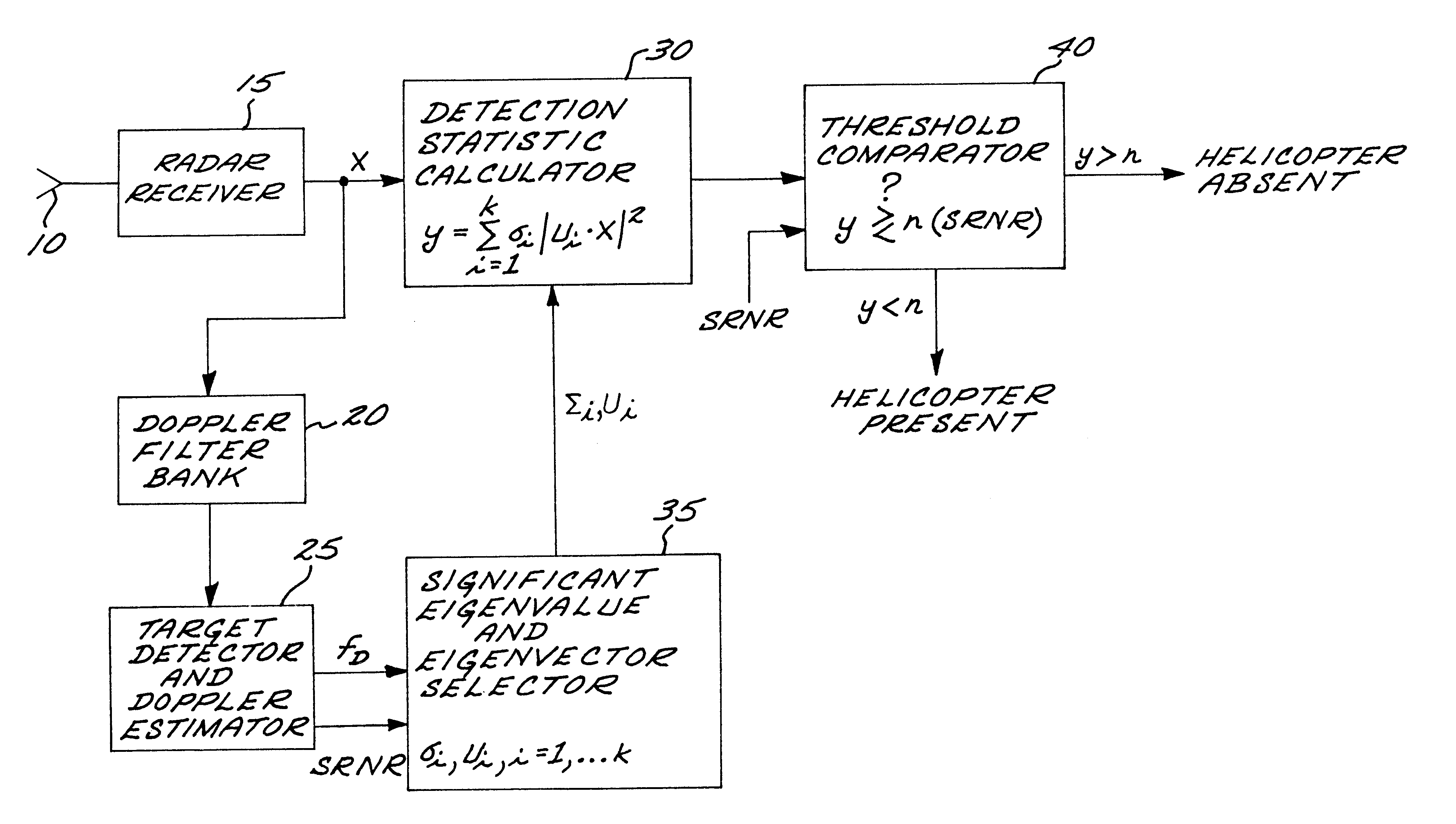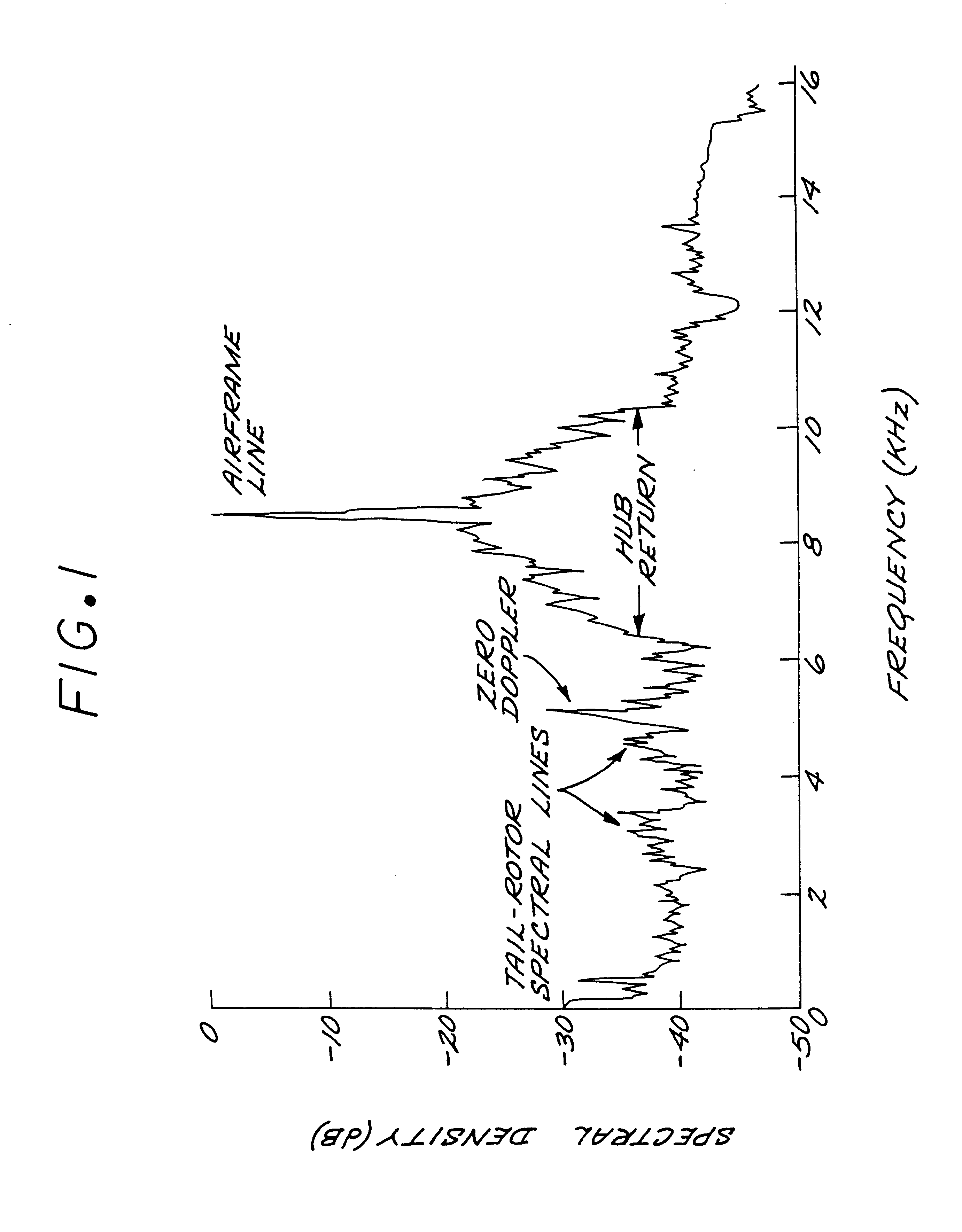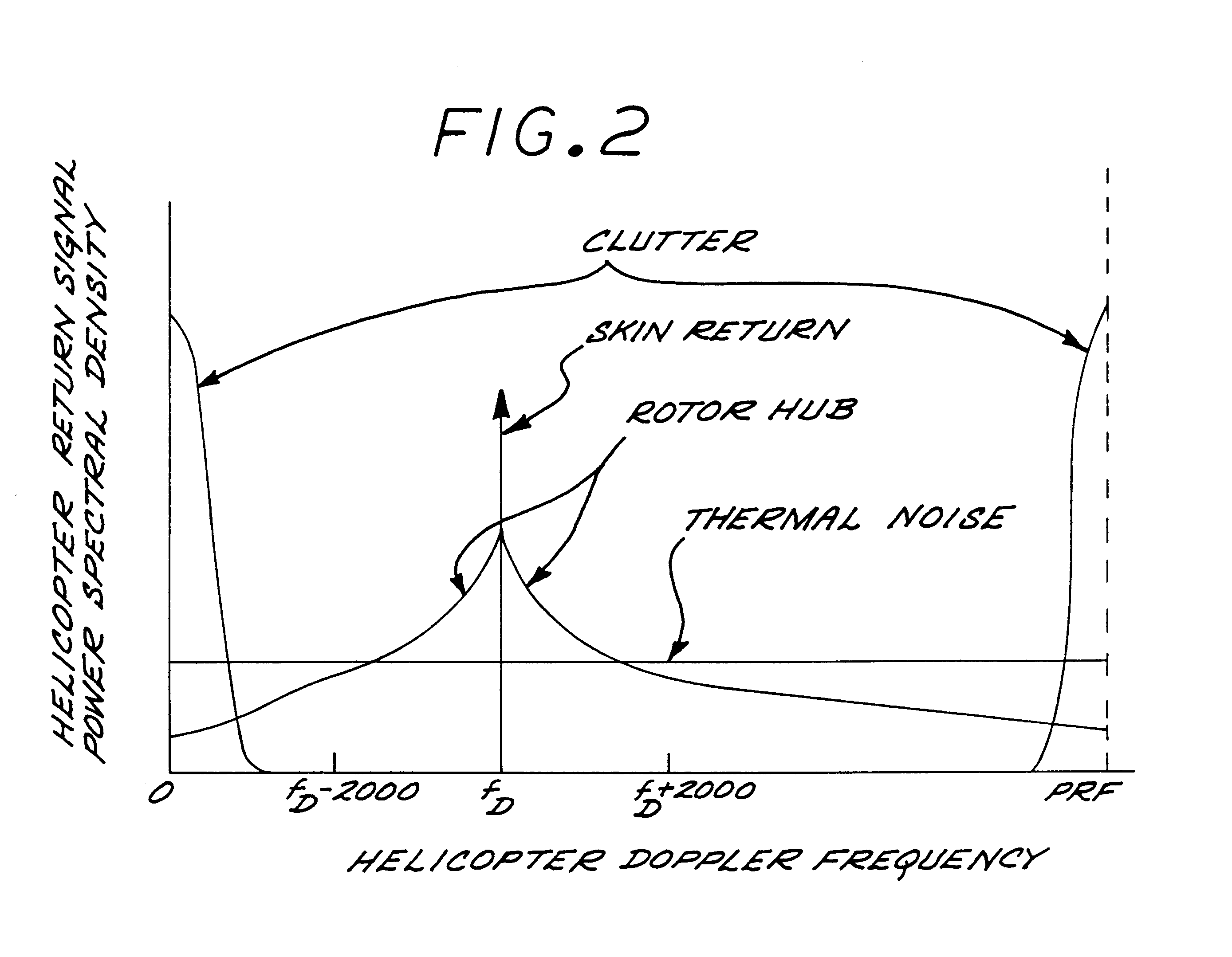Helicopter recognition radar processor
- Summary
- Abstract
- Description
- Claims
- Application Information
AI Technical Summary
Benefits of technology
Problems solved by technology
Method used
Image
Examples
Embodiment Construction
[0015]The invention comprises a radar processor for helicopter / fixed wing target classification, and relies on the spectral signature of the helicopter rotor hub, which has a higher probability of occurrence than the blade flash. FIG. 1 is a plot of the spectral density of a typical helicopter return signal as a function of Doppler frequency, shifted in frequency to illustrate the ground clutter component (at zero Doppler) and the tail rotor return. FIG. 2 is also a plot of the helicopter return signal power spectral density as a function of Doppler frequency, showing the respective skin return, rotor hub, thermal noise and clutter components. The helicopter skin return peaks at Doppler frequency fD with the rotor hub return comprising sidebands about fD The ground clutter peaks at sidebands well away from fD The thermal noise is shown in FIG. 2 as having a constant value.
[0016]The invention exploits the fact that the helicopter rotor hub reflects a considerable amount of the electr...
PUM
 Login to view more
Login to view more Abstract
Description
Claims
Application Information
 Login to view more
Login to view more - R&D Engineer
- R&D Manager
- IP Professional
- Industry Leading Data Capabilities
- Powerful AI technology
- Patent DNA Extraction
Browse by: Latest US Patents, China's latest patents, Technical Efficacy Thesaurus, Application Domain, Technology Topic.
© 2024 PatSnap. All rights reserved.Legal|Privacy policy|Modern Slavery Act Transparency Statement|Sitemap



